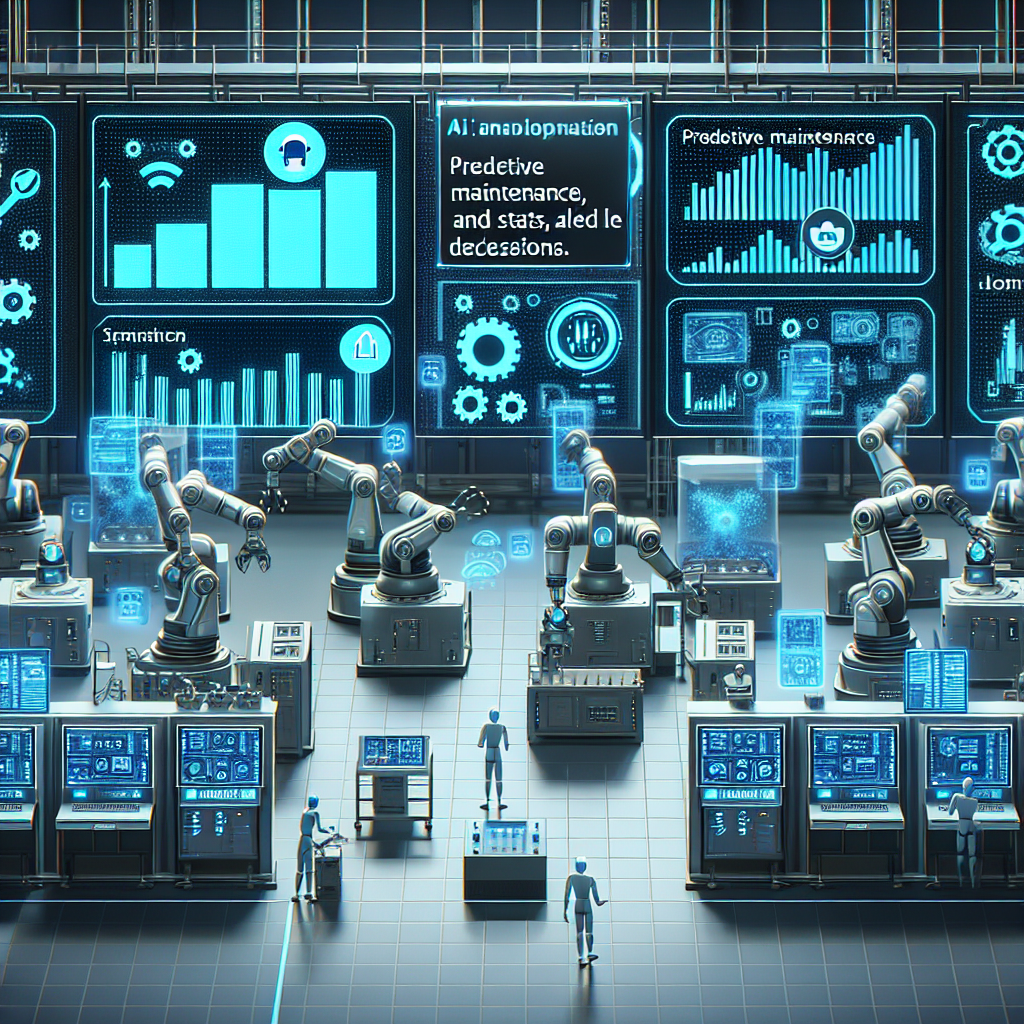In the era of Industry 4.0, smart factories are revolutionizing the way manufacturing processes are carried out. One of the key technologies driving this transformation is Artificial Intelligence (AI). AI has the potential to greatly enhance the efficiency and productivity of smart factories, particularly in the area of predictive maintenance.
Predictive maintenance is a proactive approach to maintenance that uses data and analytics to predict when equipment is likely to fail, allowing for timely repairs to be carried out before a breakdown occurs. This can help to prevent costly downtime, improve overall equipment effectiveness, and extend the lifespan of machinery.
AI plays a crucial role in predictive maintenance by analyzing large amounts of data from sensors and other sources to identify patterns and anomalies that may indicate potential issues with equipment. Machine learning algorithms can then be used to predict when maintenance is needed, based on factors such as temperature, vibration, and other performance indicators.
One of the key advantages of AI in predictive maintenance is its ability to adapt and improve over time. As more data is collected and analyzed, AI algorithms can become more accurate in predicting when maintenance is required, leading to even greater efficiencies in the factory.
Furthermore, AI can also help to optimize maintenance schedules by prioritizing tasks based on the likelihood of equipment failure. This can help to reduce costs by avoiding unnecessary maintenance on equipment that is still functioning properly, while ensuring that critical equipment is properly maintained.
Overall, the combination of AI and predictive maintenance has the potential to revolutionize the way factories operate, by reducing downtime, increasing efficiency, and ultimately improving the bottom line.
FAQs:
Q: How does AI in predictive maintenance work?
A: AI in predictive maintenance works by analyzing data from sensors and other sources to identify patterns and anomalies that may indicate potential issues with equipment. Machine learning algorithms are then used to predict when maintenance is needed, based on factors such as temperature, vibration, and other performance indicators.
Q: What are the benefits of AI in predictive maintenance?
A: The benefits of AI in predictive maintenance include reduced downtime, improved efficiency, extended equipment lifespan, and cost savings. AI can help to prevent costly breakdowns by predicting when maintenance is needed, allowing for timely repairs to be carried out.
Q: How can AI optimize maintenance schedules?
A: AI can optimize maintenance schedules by prioritizing tasks based on the likelihood of equipment failure. This helps to reduce costs by avoiding unnecessary maintenance on equipment that is still functioning properly, while ensuring that critical equipment is properly maintained.
Q: Is AI in predictive maintenance suitable for all types of factories?
A: AI in predictive maintenance can be implemented in a wide range of industries, including manufacturing, transportation, energy, and more. However, the specific requirements and challenges of each industry may require customized solutions to fully leverage the benefits of AI in predictive maintenance.
Q: What are the challenges of implementing AI in predictive maintenance?
A: Some of the challenges of implementing AI in predictive maintenance include data quality issues, integration with existing systems, and the need for skilled personnel to develop and maintain AI algorithms. Overcoming these challenges requires careful planning and a commitment to investing in the necessary resources and expertise.

